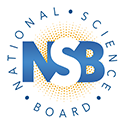If these new criteria are approved, the resolution reaffirming delegation of
authority to the Director adopted by the Board in May 1994 (Attachment A to
NSB-94-95) will be appropriately amended by the Office of the General
Counsel.
Joseph Bordogna
Attachment
Appendix D to NSB 99-153
NSB-99-125
July 16, 1999
MEMORANDUM TO MEMBERS OF THE NATIONAL SCIENCE BOARD
SUBJECT: NSB Meeting Dates for Calendar Year 2000
After discussion at the May NSB meeting, the issue of meeting dates for 2000
was tabled to allow the NSB Office to poll members once more to identify
optimum meeting dates. The meeting dates below were chosen to assure
attendance by the highest number of members possible. We have also taken
into account possible conflicts with holidays and with major professional
meetings for which meeting dates were final at the time of the polling.
Based on all these factors, the following meeting dates are recommended for
2000.
2000 Calendar of National Science Board Meetings
February 2, 3, 4 (Wednesday/Thursday/Friday)
[Policy Meeting and Board Retreat]
March 15, 16 (Wednesday/Thursday)
May 3, 4, 5 (Wednesday/Thursday/Friday)
[Annual Meeting]
August 2, 3 (Wednesday/Thursday)
October 18, 19 (Wednesday/Thursday)
December 12, 13, 14 (Tuesday/Wednesday/Thursday) [50th Anniversary]
Executive Committee
August 15 (Tuesday)
The following resolution is proposed for your consideration.
The National Science Board approves the schedule of Board meeting dates for
Calendar Year 2000 as contained in NSB-99-125.
Marta Cehelsky
Executive Officer
Appendix E to NSB 99-153
NSB 99-144
July 29, 1999
RESOLUTION OF THE NATIONAL SCIENCE BOARD
APPROVED AT ITS JULY 29, 1999 MEETING
IN COMMEMORATION OF CONGRESSMAN GEORGE E. BROWN, JR.
For over three decades of distinguished service to the U.S. Congress and the
global science community, the National Science Board recognizes Congressman
George E. Brown, Jr., as more than a friend of science. He was a fine
intellect and a conscientious leader in extraordinary circumstances.
Mr. Brown was a fount of wisdom about how science and technology transform
our lives and our understanding of it. As an advocate for space exploration
and environmental protection, he challenged scientists and policymakers alike
to consider the unanticipated consequences that future generations would
face. As a champion of basic research and science education, Mr. Brown
reminded us that all citizens of all ages expect, and deserve, a return on
government investments.
Vigilance defined Mr. Brown's career in public service. Concern about the
character of human culture and the quality of life dominated his work on the
Committee on Science. In a lecture last year, he said "Given that we can
completely transform the world with our knowledge, we are morally compelled
to answer the question, 'What is the end that we seek?'"
Be it RESOLVED that:
The National Science Board and students of government have lost a role
model and a colleague. The legacy of Congressman George Brown will
light the way to a science and technology policy for the next millennium.
|

